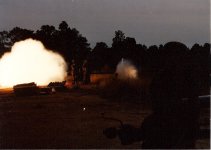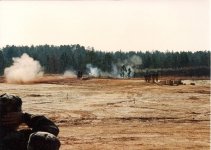Depends on how you define 'recoil'
OK, I'll pull out my (rusty) minor in Physics: It depends upon how you define 'recoil'. If you assume the gases exiting out the rear are frictionless, and that the projectile is relatively frictionless exiting the front, then there is no energy imparted to the tube. Therefore in the macro case, there is no force (recoil) transmitted to the tube, and the weapon truly is recoilless.
Measurably and theoretically, if there is friction (or a blockage like the Afghan video noted above) from gases exiting the back (which there will be from both an absolute measurable and theoretical perspective), or friction of the projectile exiting the front of the tube, then energy is imparted to the tube and a force aka recoil will be generated. Clearly the forces involved are orders of magnitude less than a similar sized projectile from a non-recoilless weapon, but they will be there and will be measurable as there are no truly frictionless systems.
As such, from the micro perspective, there are forces (recoil) transmitted, albeit relatively nil by comparison, so the weapon is not perfectly 'recoilless'.
Kind of like the famous question 'what does the word IS mean'?
OK, I'll pull out my (rusty) minor in Physics: It depends upon how you define 'recoil'. If you assume the gases exiting out the rear are frictionless, and that the projectile is relatively frictionless exiting the front, then there is no energy imparted to the tube. Therefore in the macro case, there is no force (recoil) transmitted to the tube, and the weapon truly is recoilless.
Measurably and theoretically, if there is friction (or a blockage like the Afghan video noted above) from gases exiting the back (which there will be from both an absolute measurable and theoretical perspective), or friction of the projectile exiting the front of the tube, then energy is imparted to the tube and a force aka recoil will be generated. Clearly the forces involved are orders of magnitude less than a similar sized projectile from a non-recoilless weapon, but they will be there and will be measurable as there are no truly frictionless systems.
As such, from the micro perspective, there are forces (recoil) transmitted, albeit relatively nil by comparison, so the weapon is not perfectly 'recoilless'.
Kind of like the famous question 'what does the word IS mean'?


